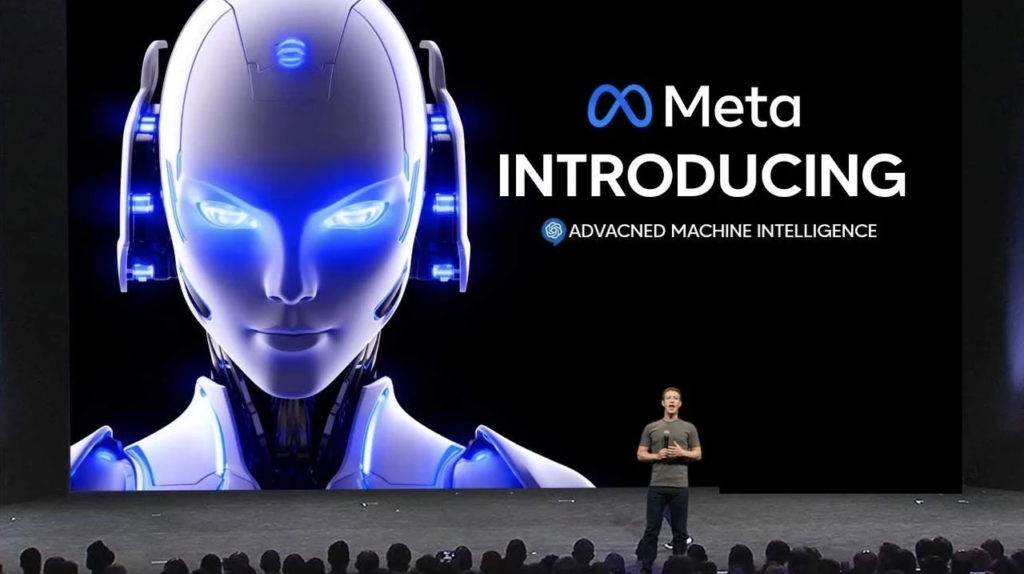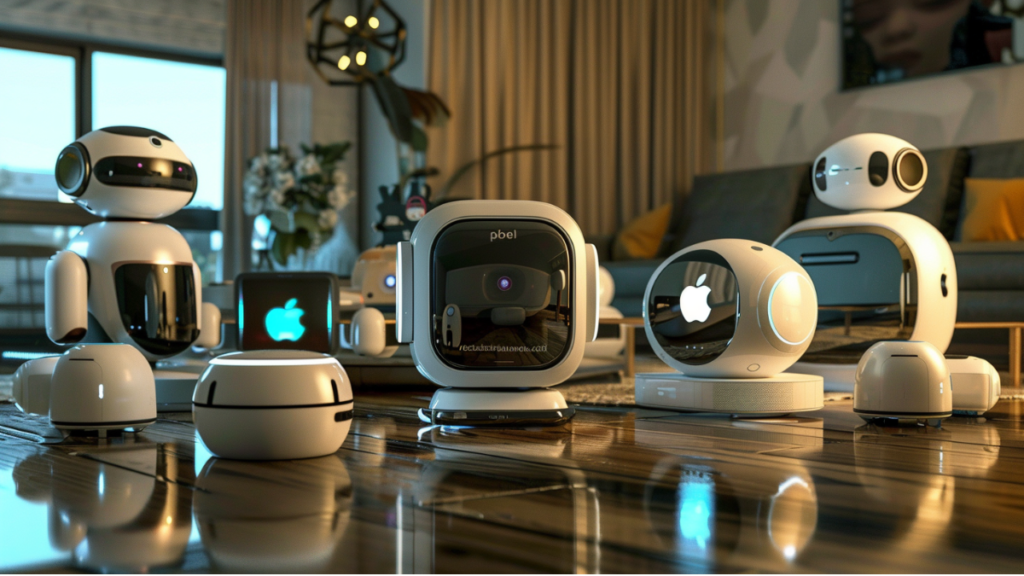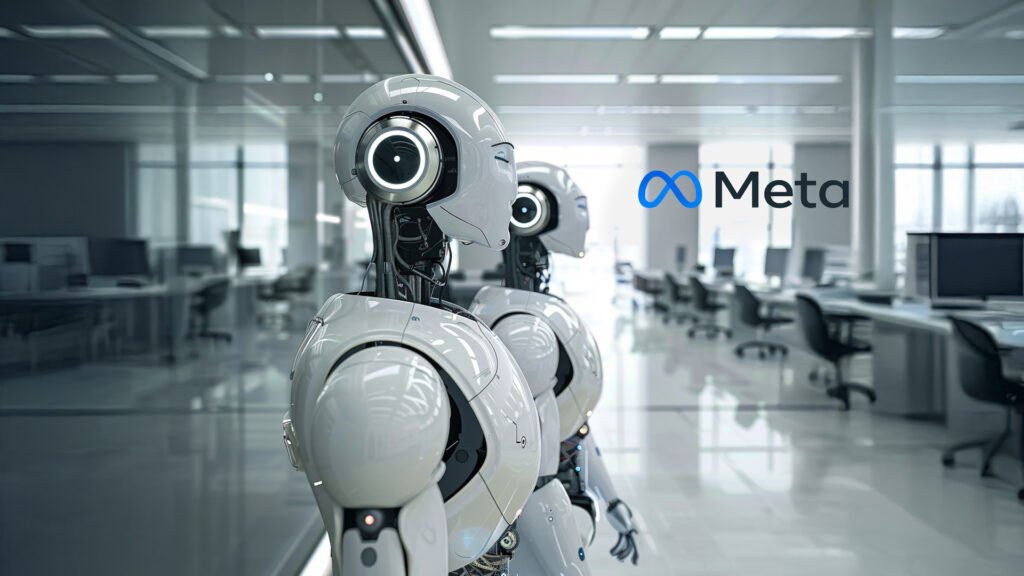Overview
Once only a social media firm, Meta is quickly evolving into a robotics and artificial intelligence powerhouse. Meta is investing heavily in AI-driven automation, following in the footsteps of tech behemoths like Apple, Nvidia, X, Figure AI, and Apptronik. According to reports, the corporation is making a significant change in its business approach by creating a new division under its Reality Labs subsidiary to produce AI humanoid robots. With this action, Meta will be directly competing with other tech behemoths who want to transform robotics and automation driven by artificial intelligence.

Meta’s Robotics Vision
In a memo, Andrew Bosworth, the chief technology officer of Meta, stated that the new robotics product group would concentrate on consumer humanoid robots that would optimize Llama’s platform capabilities. Meta’s suite of AI foundation models, known as Llama, supports a range of generative AI applications on all of its platforms. Bosworth stressed that putting money into robotics will greatly benefit Meta AI’s mixed and augmented reality projects.
Development of Hardware and AI
Meta intends to create its own hardware for humanoid robots, initially concentrating on domestic duties. The company is also developing software, sensors, and artificial intelligence to enable robots made by outside manufacturers. Early conversations with robotics companies such as Unitree Robotics and Figure AI suggest that Meta is more interested in establishing partnerships than in releasing its own line of branded robots right away.
Strategy and Leadership
The former CEO of the self-driving car startup Cruise, Marc Whitten, has been appointed by Meta to head its robotics section. Whitten, who has significant experience with autonomous systems, will be the company’s VP of robotics. Additionally, John Koryl, the former CEO of the second-hand e-commerce site The RealReal, has been named Vice President of Retail by Meta. Koryl will concentrate on increasing sales of Meta’s AI-powered wearables through direct-to-consumer channels and retail partnerships, including Quest mixed reality headsets and Ray-Ban Meta smart glasses.
Robotics’ Competitive Environment
Major players in the tech sector are engaged in a fierce competition to control the robotics and artificial intelligence domains. To make a name for themselves in the industry, companies like Apple, Nvidia, Figure AI, and Apptronik are all taking risks.
Apple’s Robotics Initiative
Analyst Ming-Chi Kuo claims that Apple is still in the early phases of creating both non-humanoid and humanoid robots. Apple seems to place more emphasis on user interaction and perception than on the actual humanoid design, in contrast to its rivals. This implies that the business is concentrating on identifying software and hardware as key technologies. It is improbable, though, that Apple will begin producing its robots in large quantities before than 2028.

Nvidia’s Robotics Initiatives Driven by AI
Leading AI and computer company Nvidia recently unveiled Cosmos, a platform intended to speed up the creation of tangible AI systems, such as robotics and driverless cars. Jensen Huang, CEO of Nvidia, underlined how crucial it is for AI to comprehend the physical world, including ideas like gravity, inertia, and spatial relationships.
Figure AI’s Audacious Forecasts
With Microsoft’s support, Figure AI has been rapidly growing its footprint in the humanoid robots market. The business is constructing a new Robot/AI Campus and has already dispatched Figure-02 humanoid robots to its second client. According to founder Brett Adcock, humanoid robots will soon outnumber people in public areas.
The Optimus Project by Elon Musk
Elon Musk is placing a large wager on Optimus, a humanoid robot that walks on two feet and can carry out activities that humans can. Optimus has proven to have sophisticated abilities, including the ability to use neural networks to walk on rough terrain. Musk has described Optimus as the “biggest product of any kind ever,” emphasizing how it may transform automation.
Apptronik’s Growth and Collaboration with Google
Apptronik, a US-based humanoid robotics business, has raised $350 million in Series A funding to expand the manufacturing of its Apollo humanoid robot. Google also participated in the investment round, which was co-led by Capital Factory and B Capital. To create intelligent and self-governing robots, Apptronik is working with the robotics team at Google DeepMind.
Meta’s Robotics Research Initiatives
In addition to making hardware investments, Meta is furthering AI research to enhance human-robot cooperation.
PARTNR Structure
A research framework called PARTNR was unveiled by Meta with the goal of improving human-robot collaboration. The goal of this project is to improve the intelligence and usefulness of robots for routine duties like cooking, cleaning, and delivery. Before putting robots into the actual world, PARTNR uses extensive simulation training.
Robot Training and Habitat 3.0

Meta is training robots to collaborate with humans in a safe and scalable way by using Habitat 3.0, a simulator made for human-robot interaction. The Spot robot from Boston Dynamics has been used by the business to test this approach, demonstrating its effectiveness in teamwork.
AI-Powered Humanoids and Meta Motivo
Meta FAIR (Fundamental AI Research) unveiled Meta Motivo, a behavioral foundation model for managing humanoid entities with virtual physics, last year. This model has outperformed conventional reinforcement learning techniques and emulates human-like behaviors.
Improvements in Dexterity and Touch Perception
Additionally, advances in human-robot interaction, robot dexterity, and touch perception have resulted from Meta’s research. The most recent developments made by the company include:
Meta Digit 360: Increasing robotic dexterity for intricate jobs. Meta Sparsh: Increasing robotic touch sensitivity.
Promoting human-robot cooperation is the goal of Meta Digit Plexus.
The Dataset of Nymeria
Meta Reality Labs Research has made the Nymeria dataset, which records egocentric human movement in naturalistic settings, publicly available. This dataset, which was gathered using miniAria wristbands and Project Aria glasses, offers useful information for training wearable AI devices like smart watches and glasses.
AI-Powered Robotics’ Future
With its entry into robotics, Meta is entering a new era that will be dominated by automation and artificial intelligence, moving beyond its social network beginnings. The business is positioned as a major player in the developing robotics sector thanks to its investments in collaborative technology, AI research, and humanoid robotics.

Possible Difficulties
Despite the encouraging advancements, Meta still has a number of obstacles to overcome in its robotics journey:
Regulatory Obstacles: Robots driven by AI are subject to stringent safety and moral regulations.
- Technical Limitations: Major advancements in hardware, AI, and sensory capabilities are necessary to create fully autonomous humanoid robots.
- Market Competition: With titans of the industry like Apple, Nvidia, and Figure AI vying for market share, Meta needs to set itself apart with original ideas.
Meta’s Opportunities
- Consumer Adoption: Meta’s humanoid robots have the potential to transform home automation if they are adopted.
- AI Integration: Meta can improve robotic capabilities by utilizing its knowledge of AI and mixed reality.
- Strategic Partnerships: Product development can be accelerated by partnerships with robotics companies and AI research institutes.
Wrap-up

Meta is quickly becoming a pioneer in robotics and artificial intelligence, and it is no longer merely a social media firm. Meta wants to influence how humans and robots interact in the future by working with robotics companies and investing in AI-driven automation. Even though there are still obstacles to overcome, the company is at the forefront of the robotics revolution thanks to its ambitious vision and technological achievements. The effects of Meta’s investments will become more apparent as the sector develops, possibly revolutionizing how people interact with AI-powered robots in daily life.







